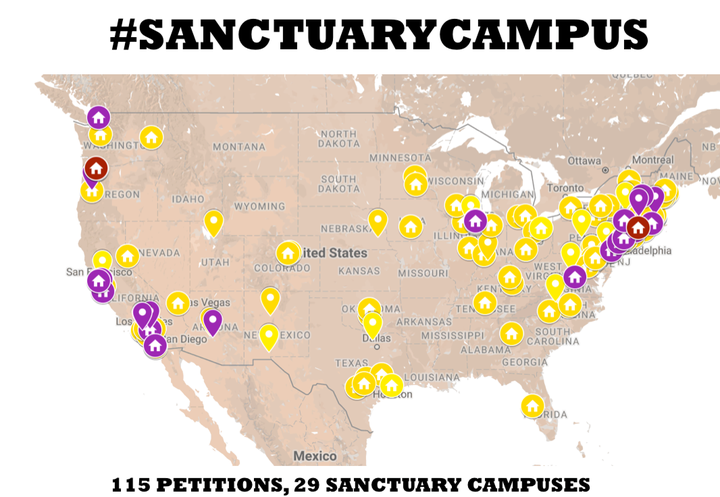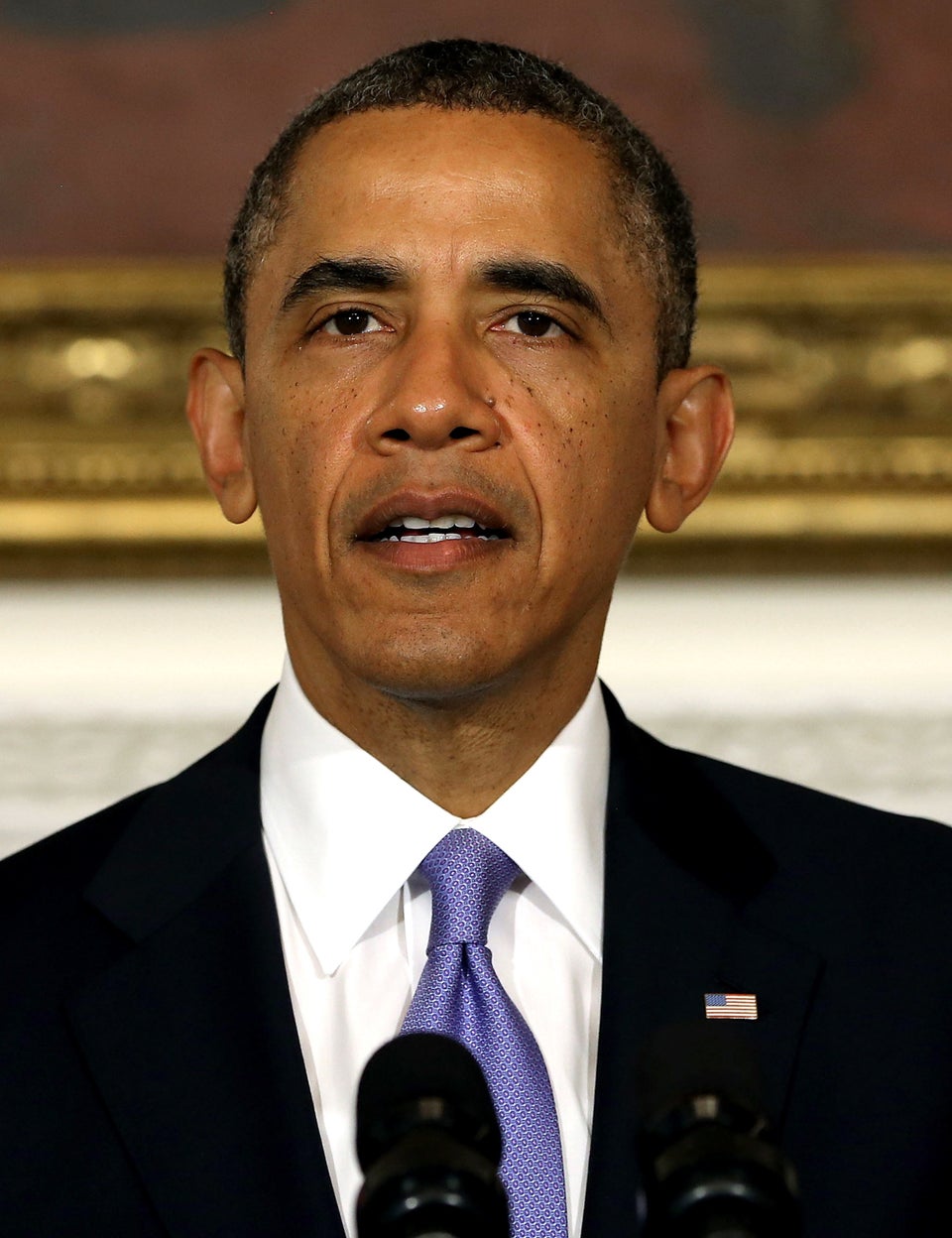
Map created by Aparna Parikh based on information compiled by Xavier Maciel. Interactive map.
“What’s in a name? That which we call a rose, By any other word would smell as sweet.” Thus wrote Shakespeare in Romeo and Juliet, but names have power as the play’s macabre ending demonstrates. The campus sanctuary movement that has spread across the country since the election has been confronting a question: Does the declaring a “sanctuary” help to protect undocumented students or does it create confusion and misleading promises?
The debate about this question is one of strategy and not goals. Students, faculty, staff and administrators across the country overwhelmingly support undocumented students as various petitions and statements can attest. This is a debate among supporters of immigrant students and there are good people on all sides.
Some argue that using the term “sanctuary” is misleading given that no campus can truly provide protection from federal immigration authorities, and that declaring a sanctuary may in fact heighten the danger faced by undocumented students by indicating that such students are present on a particular campus. Others point to the civil disobedience in the 1980s sanctuary movement or the nineteenth-century Underground Railroad, arguing that such a history confuses people who believe the campus and city sanctuary movements of today imply a similar flouting of the law. They do not. As Michael Olivas, a law professor and current president of the University of Houston, Downtown who has spent his life defending undocumented students has put it in Inside Higher Ed, sanctuary “has no legal meaning and the admonitions are vague and impossible to implement, which will only frustrate people more.”
“Some argue that using the term 'sanctuary' is misleading given that no campus can truly provide protection from federal immigration authorities,”
So why hold on to the sanctuary terminology if it has a confusing history, no legal definition and promises more than it can deliver? The answer lies not in the law or in history, but in our common sense understanding of a sanctuary as a place of refuge and a place to be safe. It is true that college and university campuses do not provide absolute refuge and safety from all danger, as we saw this last week with the brutal knife attack at Ohio State University, but we still think of our campuses as places that should be a refuge from the kinds of crime that are all too common in our cities.
A 2011 Immigration and Customs Enforcement (ICE) memo reaffirmed that schools, just like hospitals and churches, should be seen as “sensitive locations” in which enforcement activities should be avoided. In essence, ICE already treats campuses as sanctuaries where immigration enforcement should be handled with extreme caution.
Declaring a campus a sanctuary does not promise students that they will not face danger, nor does a city’s sanctuary proclamation prevent ICE enforcement. Rather, such a designation is a declaration that these are places where immigrants, even those in the country without authorization, should be respected and treated like brothers and sisters and not criminals. Sanctuary is an aspiration, a statement of values rather than a statement of fact.
Sanctuary is a powerful idea that has mobilized hundreds of thousands of people to sign petitions at more than 150 colleges and universities. Sanctuary is an idea that has convinced 28 college and university presidents to issue statements of support for undocumented students and led the presidents at Portland State University, Reed, Wesleyan, Drake and Pitzer to take the added step of declaring “sanctuary” campuses. Sanctuary is an idea that has motivated almost 300 cities, counties and states to limit their cooperation with federal immigration authorities.
The idea of sanctuary has resonated with county sheriffs across the country who have also proclaimed they would not cooperate with federal immigration enforcement. As Chief Tighe O’Meara recently posted on the Ashland Police Department Facebook page, “I offer this up to clarify a concern that has been brought up, not as a political statement, but as a statement of fact, and of re-assurance to the community: The entire State of Oregon is a ‘sanctuary’ state.”
What Chief O’Meara is saying is that Oregon state law prevents local police from doing the work of federal immigration officers. It’s not at all civil disobedience, but the opposite. The county sheriffs are upholding our state law, declaring that they will not be cajoled into unconstitutionally detaining people simply based on their immigration status. The message is clear: We are upholding the law against unconstitutional enforcement of cruel and unusual immigration regulations.
And what’s so wrong about holding up the banner of sanctuary on a college and university campus? College campuses have long been thought of as sanctuaries from the market-forces of society, as a refuge where diverse people can come together and discuss challenging ideas without coming to fisticuffs.
“Colleges and universities should be spaces where a student’s class, race, gender and sexual orientation does not limit their access to classes or their ability to succeed.”
This idea of colleges as “safe spaces” has been lampooned by the press, and sometimes students’ excessive zeal leaves them open to such accusations, such as when Oberlin students protested the Bahn Mi sandwich in their cafeteria as an inauthentic cultural appropriation. However, most students are not demanding more “authentic” cuisine, but rather campuses where they don’t have to confront racist, sexist and homophobic hate on a daily basis because that is the prerequisite for being able to have the kind of stimulating and controversial conversations that we promise as a hallmark of a liberal arts education.
Colleges and universities should be spaces where a student’s class, race, gender and sexual orientation does not limit their access to classes or their ability to succeed. Too often our campuses reflect the bigotry and hierarchies of our society rather than offer a utopian alternative to them. But that doesn’t mean we should not always strive to be our best selves, to be a sanctuary.
There was once a country that fashioned itself as a sanctuary to the poor and wretched of the rest of the world. In 1883, Emma Lazarus wrote the poem that was emblazoned on the Statue of Liberty:
Here at our sea-washed, sunset gates shall stand
A mighty woman with a torch, whose flame
Is the imprisoned lightning, and her name Mother of Exiles.
From her beacon-hand
Glows world-wide welcome; her mild eyes command
The air-bridged harbor that twin cities frame.
“Keep, ancient lands, your storied pomp!” cries she
With silent lips. “Give me your tired, your poor,
Your huddled masses yearning to breathe free,
The wretched refuse of your teeming shore.
Send these, the homeless, tempest-tost to me,
I lift my lamp beside the golden door!”
If the Statue of Liberty is Mother Exile, then sanctuary is at the heart of our country’s highest ideals. We should embrace sanctuary in our cities, counties, states, churches, synagogues and mosques. And yes, colleges and universities should represent the best ideals of America: sanctuary for the poor, the vulnerable, the wretched of the earth.

